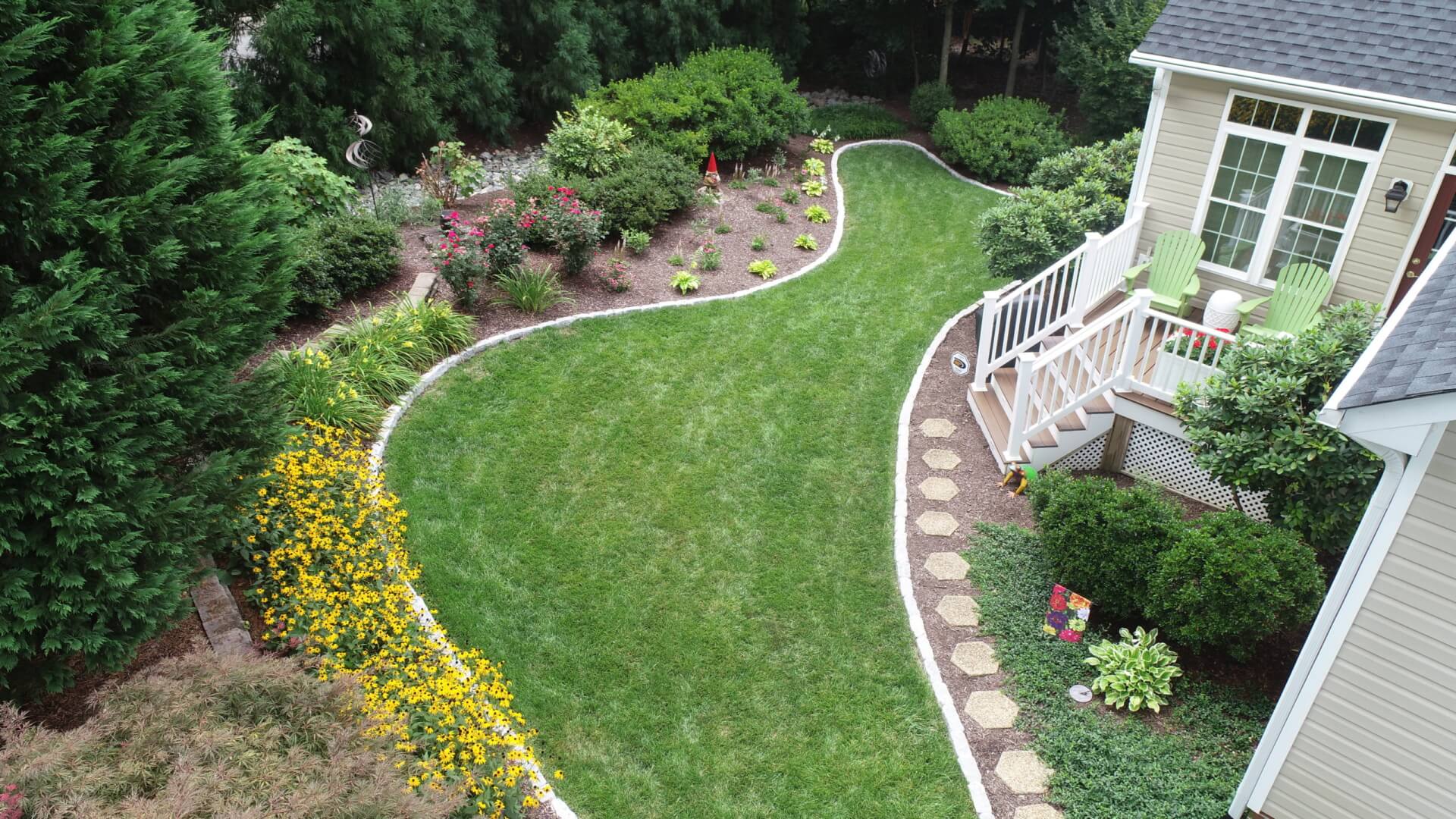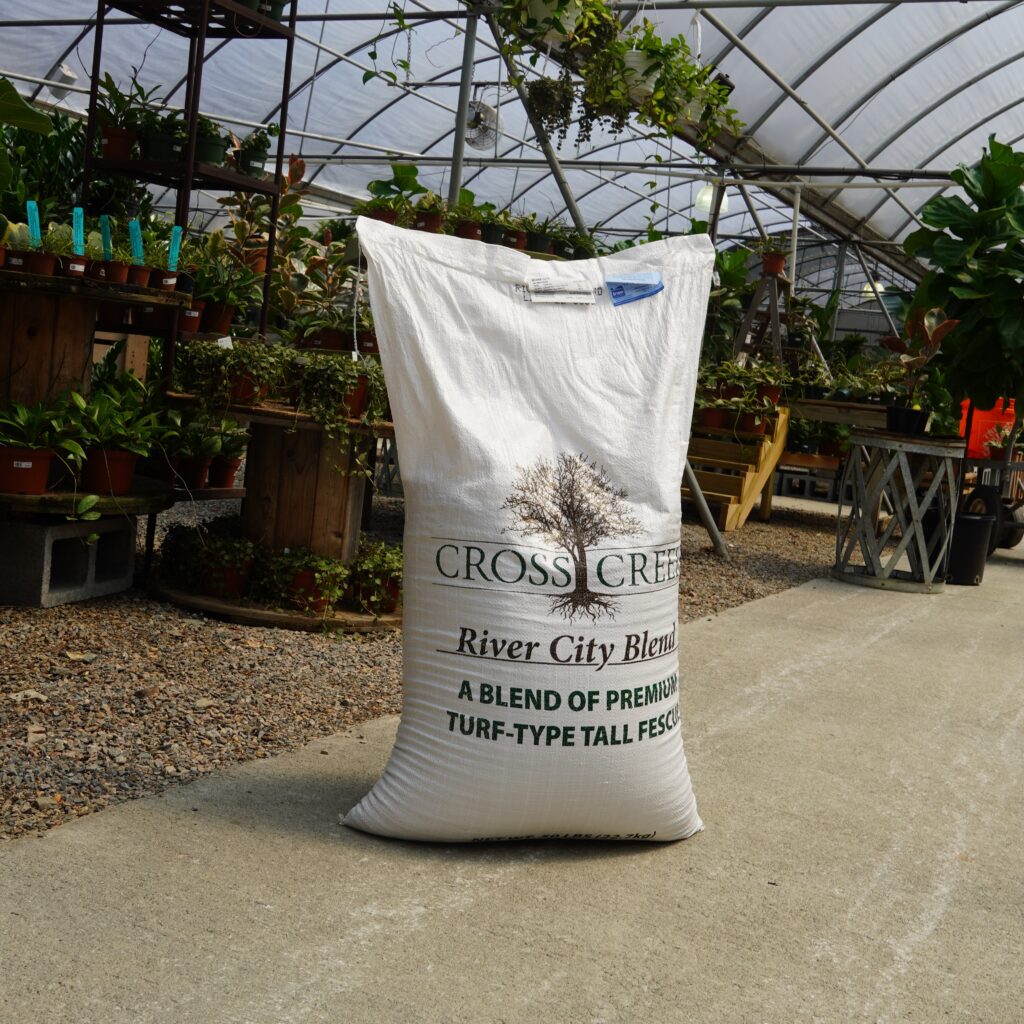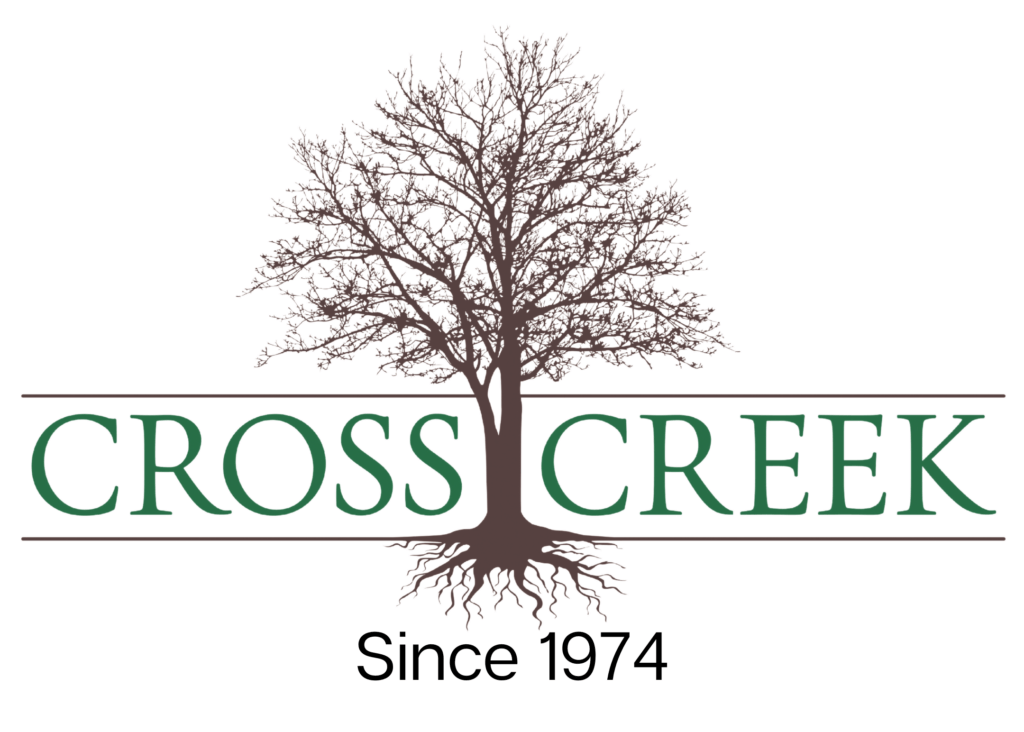
Beginner’s Guide to Fall Lawn Care
Fall is just around the corner! As summer gardens fade and the growing season winds down, it’s the perfect opportunity to improve your turf grass. As we’ve previously discussed here on the Cross Creek blog, fall is the most transformative season in the garden. Small efforts in September, October, and November pay off tenfold when Spring comes again. Spend time improving your lawn this season for a lovely outdoor living space next year.
Cool fall temperatures create the perfect conditions for lawn renovation and maintenance. We recommend waiting until the average daily temperature drops around or below 70 degrees to make big changes to your lawn. As a good rule of thumb, all seeding, aerating, and fertilizing should be completed one month before the average first frost date. For the central Virginia region, try to complete your lawn makeover by late September. It’s always a good idea to pay attention to weather patterns and hold off on lawn care tasks if a heatwave is in the forecast.
The mid-Atlantic region is hospitable to several different species of turf grass, but we recommend planting a cool season variety for an optimal healthy and beautiful lawn. Cool season grasses like tall fescue maintain their green hue year-round because they don’t go dormant during the winter months. Tall fescue offers gardeners the best of both worlds because it tolerates heat better than many other cool season grasses and it tolerates frost better than many warm season grasses. Its deep root system allows for superior drought tolerance as well. As we central Virginians know, weather is unpredictable! It’s not unusual to experience frost one week and t-shirt weather the next. Plant tall fescue for its adaptability and tolerance of sub-optimal conditions.
Choosing the right grass seed is key to achieving a beautiful lawn. While there are many commercial grass seed blends available at big box stores, most of these only promise 70 – 80% purity. That means only 70 – 80% of the seeds in the package are actual grass seeds and the rest is filler. To avoid purchasing a bag filled with filler, look for grass seed that is Blue Tag certified. To become Blue Tag certified, tall fescue grass seed must be at least 90% pure and free of noxious weeds. The tag provides additional information on the ratio of seeds in the bag along with who produced the seed blend. It’s always worth it to choose a higher quality seed blend so you can spend less time seeding and have peace of mind that those seeds will grow into lush turf grass.
Several years ago, Cross Creek set out to create our own blend of grass seed perfectly suited to our region in central Virginia. With help from specialists at Virginia Tech, we formulated our River City Blend grass seed. It’s a mix of tall fescue seeds with a Blue Tag certification so our customers can trust it’s of the highest quality. River City Blend is in store now through the fall for purchase.

5 Care Steps for Established Lawns
1. Start with a clean slate
To properly work on the lawn, you’ll need a clean slate. Keep the turf clear of fallen leaves so that each individual grass plant receives adequate sunlight, water, and oxygen. A lawn covered with damp leaves can easily become a breeding ground for fungus and disease.
Leaf litter provides valuable habitat for pollinator larvae, so we recommend pushing them to natural areas or around the borders of your garden beds rather than sending them to the landfill. With the proper setup, fall leaves can also be composted to become rich soil for the garden in a matter of months. We recommend cutting your grass to a uniform height of 4″ in early December as the grass is shutting down and stop cutting through the winter. Resume mowing in March as the turf breaks dormancy. Cutting the grass too short allows fertilizer to move out of the plant more quickly and generally increases the thatch layer, so it’s best to keep it around 3 -4” tall year-round.
2. Aerate
Aeration is a crucial step in creating a lush, healthy lawn. By punching small holes in the surface of the soil, oxygen can circulate down to the roots of each individual grass plant and kickstart the growth cycle. Aeration also allows nutrients from fertilizer to reach the deepest roots of each plant.
3. Amend the soil with fertilizer & lime
While most lawns need a boost of fertilizer in the fall, not all require the same nutrients. As is the case with our tips on spring fertilizing, we recommend getting a soil test to understand the conditions of your yard. Choose a fertilizer specifically formulated for lawns based on the nutrients your soil lacks. If fresh seed is being planted, opt to apply a more gentle starter fertilizer at the time of seeding.
Lime may be necessary to correct the pH of your soil. Use a fast acting lime before applying fertilizer and make sure to water thoroughly after application.
4. Overseed
Overseeding in the fall produces a thicker and healthier lawn for the next year. Apply seed according to the package directions for overseeding. As a general rule of thumb, one pound of seed is necessary for every 150 square feet of space.
5. Water
Keeping the turf moist for a few weeks after seeding & fertilizing allows each seed to properly germinate. Try to water twice a day for 15-20 minutes in the morning and early afternoon. Avoid watering late in the evening so excess water has the opportunity to evaporate off of the surface. After about two weeks, you’ll begin to see new growth! This is the time to check for bare spots and apply another layer of seed where necessary.
Throughout the winter, stop irrigation altogether. Dormant grass requires much less water because it’s not expending energy to actively grow. In mid-late April, switch back to your regular irrigation routine.
Every homeowner should be empowered to improve their own outdoor living spaces, but we understand that some folks would rather leave it to the professionals. Cross Creek Grounds Maintenance offers several programs to renovate and maintain your turf. Give us a call to talk about your lawn goals and get a quote!

Thank u for your professionalism!